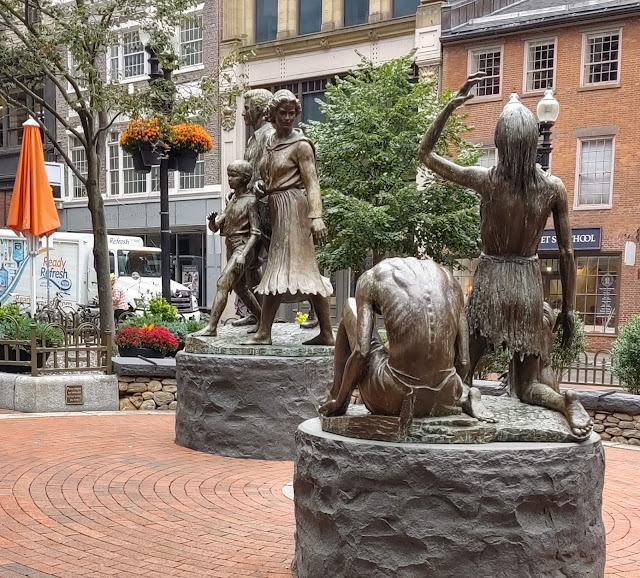BOSTON IRISH FAMINE MEMORIAL, Proclamation by HON. JOHN JOSEPH MOAKLEY, MARCH 17, 1999
HON. JOHN JOSEPH MOAKLEY
Mr. MOAKLEY. Mr. Speaker, it is fitting that on the feast on St. Patrick I rise to pay tribute to the Irish community of Boston and Massachusetts for building a poignant memorial to commemorate the 150th anniversary of the Irish Famine. The Boston Irish Famine Memorial sits at the corner of Washington and School Streets, near Downtown Crossing, just a few blocks from where Famine Irish refugees originally settled in the 1840s. The memorial's place along the city's Freedom trail serves as a constant reminder of what the Irish and others sought when they braved oceans and continents to reach the United States of America.
Ireland's Famine, which lasted from 1845 to 1849, drove over 100,000 Irish refugees to the shores of Boston, where they arrived impoverished, sick, and traumatized by one of the great catastrophes of the 19th Century. Their rise from famine to fame is one of the great American success stories.
The Boston Irish Famine Memorial committee was headed by Thomas J. Flatley, an Irish immigrant who came to this country in 1950 from County Mayo. Mr. Flatley's reputation as a generous contributor to and tireless advocate of Irish and religious causes is well know in Massachusetts. He and his committee were able to draw upon hundreds of friends from the greater Boston community to raise one million dollars to build the park. Donations came from individuals and large corporations alike, and ranged from $5,000 to $50,000.
The committee was comprised of leading members of greater Boston's Irish community, and included college presidents and bank presidents, professors and writers, musicians and artists, and representatives of the major Irish Organizations throughout the state.
Massachusetts artist Robert Shure designed the Memorial, which features twin bronze statues depicting the odyssey of the Irish immigrant from tragedy to triumph. Mr. Shure is a well-regarded artist whose works include the bust of George Washington at the Washington Memorial in Washington, as well as the Korean War Memorial in the Charleston Navy Yard, Boston.
The unveiling of the Boston Irish Famine Memorial last June 28 attracted over 7,000 people, and included Ireland's Minister of State Seamus Brennan, Ireland's Ambassador to the United States Sean O Huiginn, Massachusetts Governor Paul Cellucci and Boston Mayor Thomas Menino. Bernard Cardinal Law, head of Boston's Catholic Archdiocese, blessed the memorial. Also present that day were the ordinary people of Boston's neighborhoods-South Boston, Charlestown, Dorchester, Brighton-many of them descendants of the Famine generation. For them, it was a day of remembrance and redemption.
It is worth noting that the committee invited representatives from the African, Asian, and Jewish communities to participate in the ceremonies. The Irish Memorial is more than the story of the Irish succeeding in the United States, it is a parable of becoming American. Since the unveiling, thousands of people from all walks of life have visited the Memorial, to reflect upon the story it represents. Last October Ireland's President Mary McAleese visited the site while in Boston.
The committee's success in building this memorial park in just over two years will soon be matched by the second phase of its humane and practical mission. It is currently working to establish an Irish Famine Institute in Boston to raise relief funds for people in countries still afflicted by famine around the world today. The Institute will also seek to honor missionaries and health care workers toiling in famine countries in the spirit of the late Mother Theresa.
"The Irish love to help others in need," Flatley says. "We want the Institute to serve as a beacon of hope for those people still suffering from hunger and disease a full century and a half after Ireland's Great Huger occurred. The Institute will give to others what the Irish themselves sought when they came to Boston-compassion and a helping hand"
These words underscore the spirit of the Irish community of Massachusetts and indeed Irish people everywhere. I offer my heartfelt thanks and congratulations to the Boston Irish Famine Memorial committee for this tremendous undertaking.
***




Comments